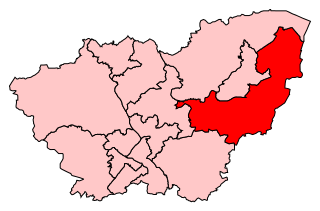Boundaries
1918–1950: The County Borough of Plymouth wards of Charles, Compton, Friary, Laira, St Andrew, Sutton, and Vintry.
1950–1951: The County Borough of Plymouth wards of Charles, Compton, Crownhill, Drake, Friary, Laira, Mutley, St Andrew, Sutton, Valletort, and Vintry, and the parish of Bickleigh in the Rural District of Plympton St Mary.
1951–1955: The County Borough of Plymouth wards of Charles, Compton, Crownhill, Drake, Efford, Friary, Mount Gold, St Andrew and Sutton. [3]
1955–1974: The County Borough of Plymouth wards of Charles, Compton, Crownhill, Efford, Friary, Mount Gould, Peverell, Sutton, Tamerton, and Trelawney.
1974–1983: The County Borough of Plymouth wards of Crownhill, Efford, Mount Gould, Plympton Erle, Plympton St Mary, Plymstock Dunstone, Plymstock Radford, and Sutton.
1983–1997: The City of Plymouth wards of Efford, Eggbuckland, Mount Gould, Plympton Erle, Plympton St Mary, Plymstock Dunstone, and Plymstock Radford.
1997–2010: The City of Plymouth wards of Compton, Drake, Efford, Mount Gould, St Peter, Stoke, Sutton, and Trelawny.
The 1997 boundary changes were highly favourable to Labour in this constituency: what had been a safe Conservative seat became a marginal seat. As such the seat from 1997 until 2010 was closer in its wards to the defunct marginal seat of Plymouth Drake. [4]

Southampton, Itchen is a constituency represented in the House of Commons of the UK Parliament since 2015 by Royston Smith, a Conservative member of parliament. Discounting the Speaker returned in the early 1970s in two elections, local voters have elected the MP from only two parties alternately for various periods, with one party reaffiliation (defection) between elections when the Labour Party split in the 1980s.

Plymouth, Devonport was, from 1832 until 2010, a borough constituency represented in the House of Commons of the Parliament of the United Kingdom. It covered part of the city of Plymouth in South West England, including the former borough of Devonport.

Rushcliffe is a constituency in Nottinghamshire represented in the House of Commons of the UK Parliament from 2019 by Ruth Edwards, a Conservative.
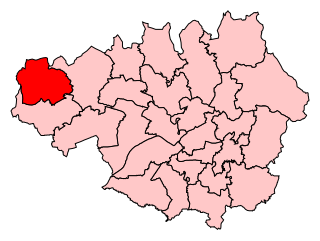
Wigan is a constituency in Greater Manchester, represented in the House of Commons of the UK Parliament since 2010 by Lisa Nandy of the Labour Party, who also serves as the Shadow Housing and Levelling Up Secretary.

Eltham is a constituency created in 1983 and represented in the House of Commons of the UK Parliament since 1997 by Clive Efford of the Labour Party.

Totnes is a parliamentary constituency in Devon represented in the House of Commons of the UK Parliament since December 2019 by Anthony Mangnall, a Conservative. Mangnall defeated incumbent Sarah Wollaston who had originally been elected as a Conservative but defected to the Liberal Democrats earlier that year.
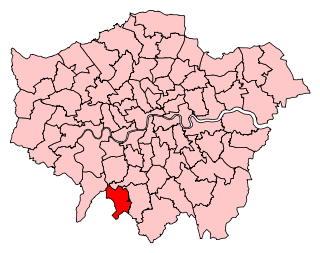
Sutton and Cheam is a constituency represented in the House of Commons of the UK Parliament since 2015 by Paul Scully, a Conservative.
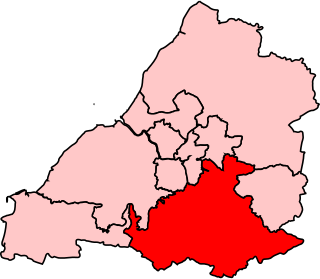
Wansdyke was a county constituency represented in the House of Commons of the Parliament of the United Kingdom. It elected one Member of Parliament (MP) by the first past the post system of election.

Faversham and Mid Kent is a constituency represented in the House of Commons of the UK Parliament. Since 2015, the seat has been represented by Helen Whately of the Conservative Party.

Plymouth Sutton and Devonport is a constituency created in 2010, and represented in the House of Commons of the UK Parliament since 2017 by Luke Pollard, a Labour Co-operative party candidate.
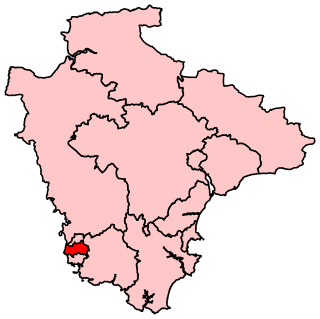
Plymouth Moor View is a constituency represented in the House of Commons of the Parliament of the United Kingdom. It elects one Member of Parliament (MP) by the first past the post system of election and has been represented since 2015 by Johnny Mercer of the Conservative Party.

Peckham was a borough constituency in South London which returned one Member of Parliament (MP) to the House of Commons of the Parliament of the United Kingdom. Elections were held using the first-past-the-post voting system.
Bexleyheath was a parliamentary constituency in south-east London, which returned one Member of Parliament (MP) to the House of Commons of the Parliament of the United Kingdom.
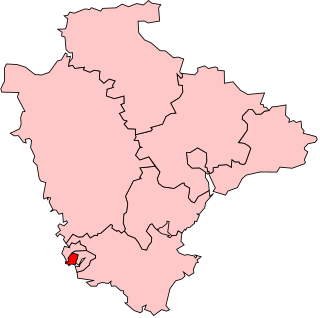
Plymouth Drake was a borough constituency in the city of Plymouth, in Devon. It elected one Member of Parliament to the House of Commons of the Parliament of the United Kingdom by the first past the post system of election.






